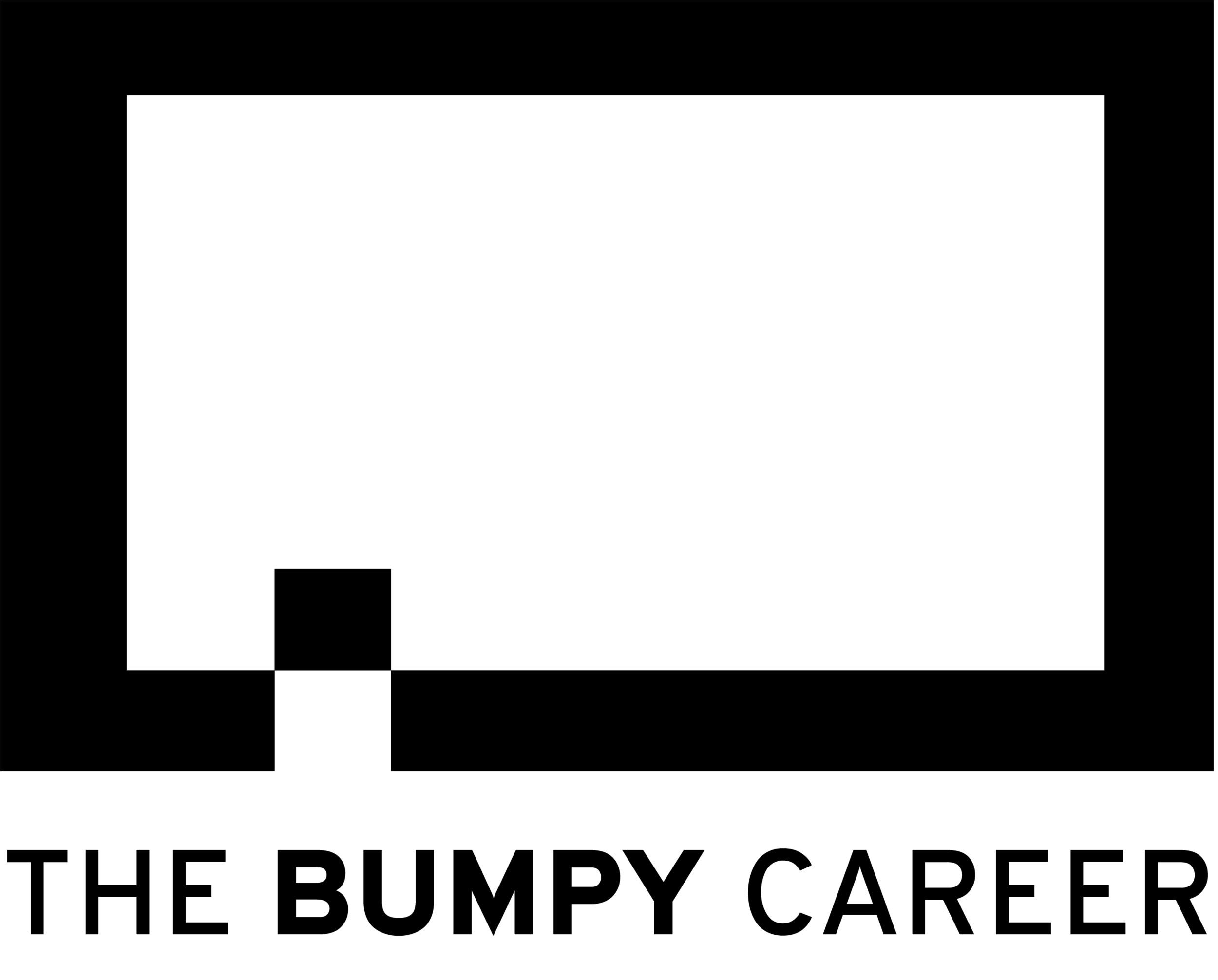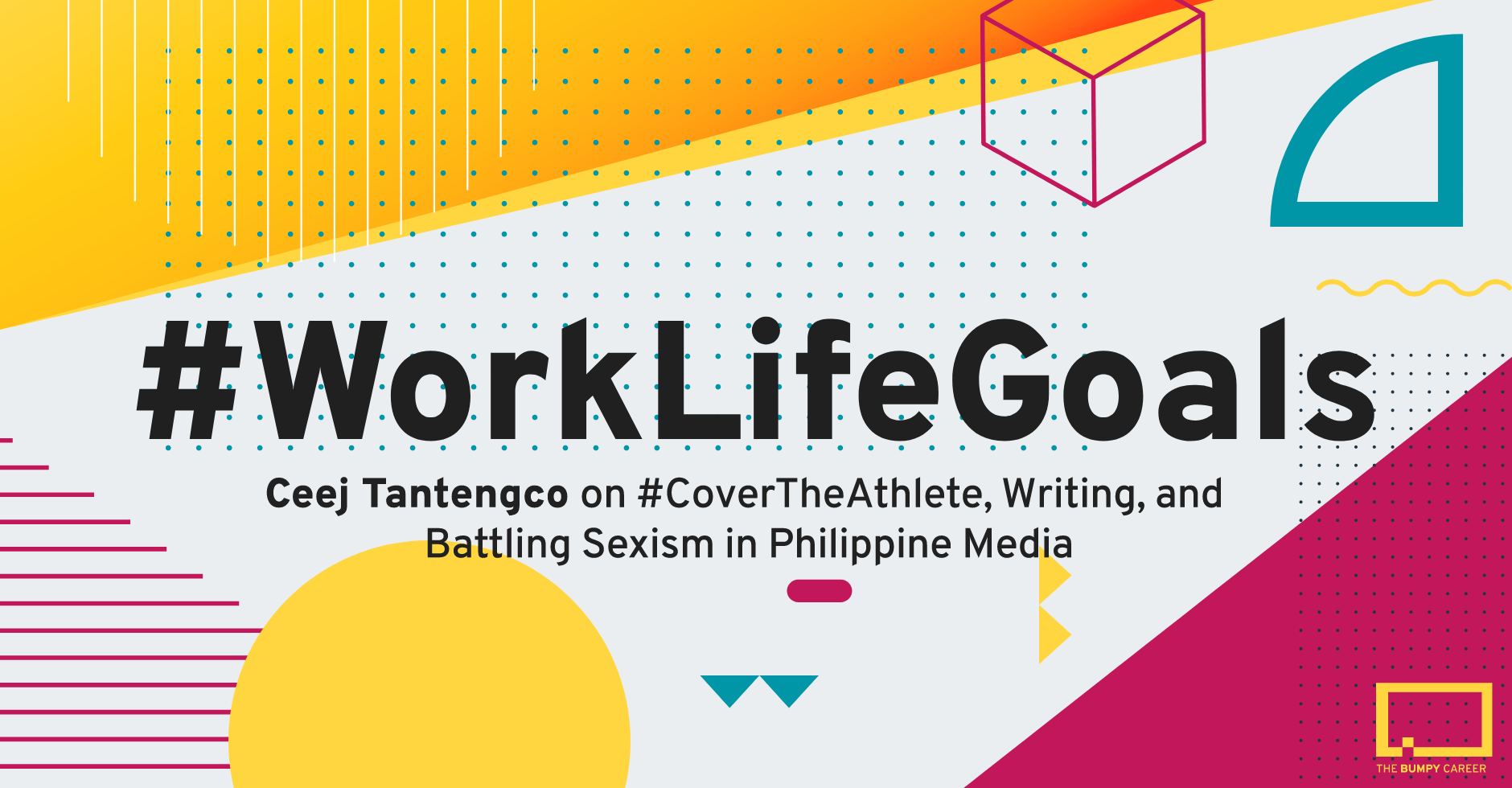#WorkLifeGoals: Ceej Tantengco on #CoverTheAthlete, Writing, and Battling Sexism in Philippine Media
What happens when a three-time Palanca awardee meets The Bumpy Career’s editorial assistant for a chat about what it was like to go from being a Communications student at Ateneo de Manila University to being a multi-hyphenate #worklifegoal?
Specifically, to founding a Philippines-centric travel magazine, a foodstagram extraordinaire aka @ceejtheday on Instagram, a millennial journalist, and a copywriter for the branding agency that started Hole in the Wall, Bad Bird, and Wrong Ramen. I'm not really sure, which is why I decided to find out by letting Annicka Koteh take a crack at launching today's new section, #WorkLifeGoals.
Without further ado, thanks for reading and hope Ceej wrote something useful for you!
Hey there, dear readers! This is Annicka, editorial assistant here at TBC and writing this introduction. Allow me to introduce not just myself, but our new series—#WorkLifeGoals!
TBC has been hard at work finding people who have not only achieved success in their careers, but also have interesting narratives about the roads they’ve taken. With this, we’ll not only be Intern-viewing people who are just learning the ropes of professional life, but interviewing actual individuals who came, saw, and conquered to help inspire the next generation of movers.
Honestly, we’ve been excited about this for a while. Even more so because our first interviewee is someone really special in the field of journalism, and obviously has much to say about a lot of social issues. I’ve had the privilege of meeting her for a speaking engagement before, and it’s not every day that you chat with a three-time Palanca awardee and ABS-CBN courtside reporter for the second time.
This is Cristina Gratia Tantengco, better known as Ceej in her line of work—which is tricky to pin down, since she’s been involved in PR, social media management, sports reporting, and freelance writing (particularly for her online food and travel publication, Kamusta Magazine). For now, we can peg her as a communications specialist and an eloquently, socially aware netizen, or, in her own words:
“A writer-turned-reporter seeking adventure.”
Here’s what she had to say about her career adventure so far, and what else she’s gathered along the way.
Going into college, what did you expect your career path to be like? Did it turn out the way you expected it to be, and in what ways has your educational background helped you prepare for it?
My path from college to career, or even career to career, is less of a straight line and more like a meandering, zigzag path. I came into college having won my first Palanca award, and the big dream was to write my own book or to have regularly published essays in a newspaper column like Jessica Zafra. Journalism felt foreign to me and I resisted it for a long time.
I took classes based on what I was into, not necessarily where I expected to work—a film directing class with Marie Jamora, film studies with Fr. Nick, Korean and French language lessons. I don’t mean this in a mayabang way, butI felt like I already knew how to write, but I needed life experience and a wider worldview. Maybe I’d work in those fields and maybe not, but I admire filmmakers and academics a lot so I wanted to get my feet a little wet.
If you think college is about strict causality, like Oh I need to do X for my future job therefore let me study Y, you hold yourself back from other paths that you might discover actually interest you. Better to be prepared for many things!
If I could change anything, I would have taken business classes too because handling money as a freelancer is hard. Mahirap yung palaging “for the love of it” or “art for art’s sake.” Haha.
What kind of stories do you strive to tell? As a journalist, what events or topics have been the most fulfilling to cover and write about?
The writers I look up to are the philosophers and great thinkers—people whose ideas changed the world, people who spoke the truth even if it got them in trouble.
As a reporter: I was lucky enough to cover all three games of the NCAA Season 91 finals. Games like that are fulfilling not because they’re the big games, but because you’ve gotten to know the players and coaches throughout the regular season. Seeing them grow and their stories unfold gives me goosebumps.
As a writer: Earlier this year I wrote a story about sexism in the way Philippine media covers female athletes. Why is the dominant storyline for women’s sports “Top 10 Prettiest [Sport Here] Players”? How does this hurt athletes’ careers? Do we actually we need to settle for this? It’s so easy to say “that’s the way it’s always been,” but every time you say that, you turn down the opportunity to ask “how can we do better?”
To see athletes, fellow journalists and fans sharing the article and talking about their own experiences, and to see the discussion grow and grow? That’s its own reward.
What’s a normal working day like for you?
What’s normal? Haha. Being a freelancer means every day is different. This week: I’m going to a restaurant for a food review on Monday, an NCAA game on Tuesday, a Hole in the Wall event on Wednesday, then I get a break on Thursday to write at home, then Friday is for two NCAA games and dinner with my boyfriend.
You're the founding editor of Kamusta magazine, a source for local travel and food articles. How did this venture come about?
I’ll be honest with you. Running a publication is so hard!
What is your creative process like for conceptualizing a story, an interview, or even ad copy for Bad Idea? What do you draw inspiration from?
Basic question: What has everyone else done? Then do something else.
What hindrances have you encountered when chasing a story, whether from its subject or other external factors?
When writing about sexism in the media, you become acutely aware of old boys’ clubs who try to shut women’s voices down. I’ve been called a feminazi, a know-it-all, naïve, too opinionated, uptight…it’s very tempting to engage them, but it’s better to let your work speak for itself.
You are a staunch advocate of responsible journalism. Aside from your call for sports journalists to #CovertheAthlete and your stand on women empowerment, what other issues in media and social perception do you want to bring to light? How have you, as a media practitioner, sought to amend these?
I’m upset about the misinformation surrounding Martial Law and the insidious historical revisionism being peddled by the Marcos family. There was also a lot of misinformation going around on social media during the elections—false info, memes, made-up quotes.
The fight is in social media. I got my start writing essays with a political bend, but most people don’t have time to read five to ten pages. And I don’t have the time anymore to sit down and churn them out. So I use Twitter to tweet facts and commentary. I quote-retweet my replies to people spreading misinformation so more people can see. And I share articles about what really happened whenever I come across them. It’s a very millennial response, no?
Given the resurgence of discussions on rape culture, catcalling, and other gender discrimination issues, what can you say about the state of Filipino women—in society and in how they are portrayed in media? Where should the discussions on these lead?
One-off discussions should snowball into a collective narrative, which should then lead to actual changes in how we behave.
About a month after my #CoverTheAthlete article came out, Alexa Micek, Charo Soriano and other volleyball players went on CNN’s SportsDesk and talked with Mico Halili, starting their own hashtag #AteAngGalingMo to highlight what they want to hear from fans. I’m very grateful to people who are more established in the industry who have shared the article or voiced their support, like athletes Gretchen Ho and Denden Lazaro, TJ Manotoc of ABS-CBN Sports, the young journos of Tiebreaker Times.
There’s this interview with the actress Mackenzie Davis where she says “if you have even a modicum of power, you need to use that platform to give voice to those who have none.” We need to keep these kinds of discussions going.
Women in media need to work together, too. I’m very grateful to Charmie Lising, a sportswriter with Humblebola (and a super Paul Lee fan) for her help in researching my article. Passion project lang talaga for both of us. If possible, try to fight in little ways. Push back against little forms of discrimination. Hopefully that gives others pause before doing the same to other women.
How do you see Philippine media and journalism changing with social media and more outspoken citizens? Has social media improved or diminished the accuracy of modern journalism?
Social media has made it easier than ever to get information. The scope of information we have access to is staggering and that’s amazing. The trouble is when people don’t know how to rank sources.
It’s a strange time when people call news outlets biased and inaccurate but inexplicably trust Mocha Uson.
Social media has neither improved or diminished the accuracy of journalism.
Real journalism is accurate. If not, it’s just hot takes. Hopefully we learn more discernment as we go along.
Where do you see yourself in five to 10 years, in your current field or otherwise? By then, what impacts on your industry and society would you want to have made?
I’m loving the raw emotions of sports so hopefully I can keep doing this! But the big dream ever since I was a kid is to host my own food and travel show. I got my start working behind the scenes so I can produce and write as well. Haha ang daming gusto no? I’m up for anything. As long as I’m telling stories I’ll be happy.
What advice can you give to those aspiring to be in your line of work?
In any industry there are good and bad habits. Just do good work.Do the best work you can. On a bad day it may feel thankless but the right people will notice and it will pay off. And if they don’t notice, at least you know for yourself that you didn’t lose yourself.
And that's it from both Ceej and Annicka for today's post!
Hi! I’m Justine.
I’m the founder and writer of all things in The Bumpy Career and welcome to #WorkLifeGoals, where we interview people with interesting careers and how they ended up there. Providing real-life inspo and asking the questions you probably haven’t thought of yet either.
Find me on other platforms.
LinkedIn | Instagram | Facebook | Twitter


